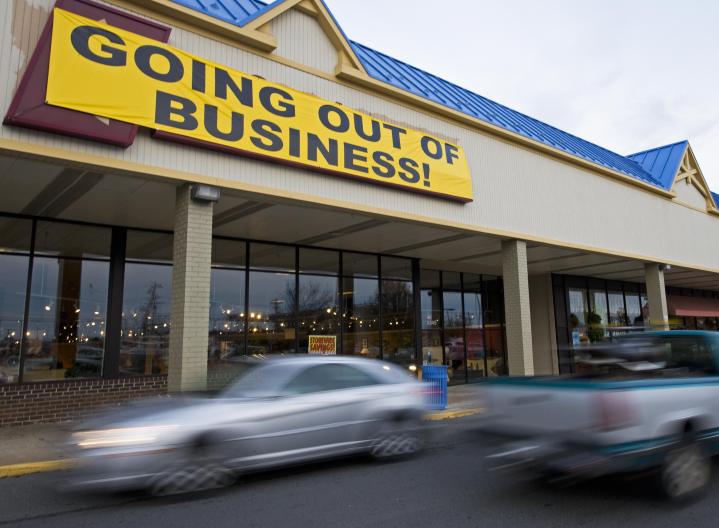
But just because a project sounds bold or overly ambitious doesn’t necessarily guarantee success. Here are six spectacular tech flops that might’ve been game changers, but never materialized in any meaningful way.
The fastest computer in the world
In 1956, IBM engineers set out to create the fastest supercomputer that had ever been built. Five years later, they had developed a machine called the IBM 7030, a.k.a. “Stretch,” which held the record of world’s fastest computer until 1964. So why is this project on a list of notable failures then?
One notable reason is that IBM had promised the Los Alamos National Laboratory, who the project was designed for, a computer that would be 100x faster than the machine it was meant to replace. When completed, it was only 30-40x faster. Because of this, IBM had to slash the machine’s price from $13.5 million to $7.8 million, which meant it lost money on every unit built.
In the end, IBM only built nine IBM 7030 machines, and the project was considered an ambitious failure.
What we got instead: The IBM 7030 may not have lived up to IBM’s ambitions, but it lay the groundwork for plenty of later tech advances in areas like memory protection, memory interleaving, and other innovations which have helped build faster and better machines.
Computers… in the Victoria era?
Charles Babbage is rightly considered one of the fathers of the computer industry, but you wouldn’t know it from looking at the machines he actually “shipped.” In the 1840s, he designed an enormous automated calculator called the Difference Engine, although it was never built due to the project’s enormous cost and size.
He then designed the Difference Engine No. 2, which improved capabilities while reducing the number of parts — although this too went unbuilt. One other project called the Analytical Engine (which had programs written for it by programming pioneer Ada Lovelace) also remained unbuilt in his lifetime.
What we got instead: Well, computer history as we know it. Babbage helped lay the groundwork, and while we were deprived of these steampunk marvels, things seem to have turned out pretty well. In 2002, 153 years after Babbage designed it, engineers did manage to build the world’s first complete Babbage Engine — thereby proving that the innovative design works.
Projecting the Google logo onto the Moon

Compared to the world’s first or fastest computers, this is a bit of an odd one, although it certainly shows off Google’s willingness to dream big. Back in 1999, when Google was just starting to gain momentum, it hired a new vice president of marketing named Scott Epstein. When Epstein sat down with Google’s founders, he found that they wanted to do something a lot more ambitious than traditional marketing — with one notable idea being to project a laser image of the Google logo on the Moon. So, you know, everyone would know about it.
We’re not sure how far this idea ever got, but as anyone who has ever looked up at night will know, it didn’t wind up happening.
What we got instead: There’s no Moon-based advertising if that’s what you’re asking. But Google did revolutionize adverts with its AdWords concept. That’s a lot more lucrative than lunar ads, although arguably less exciting.
Apple-themed eateries
Apple was a very different company in the 1990s to the tech giant that’s closing in on a trillion dollar valuation today. Before Steve Jobs made his triumphant return in 1997, Apple was suffering the negative effects of mismanagement, Microsoft dominance, and products that just didn’t seem to hit in the marketplace.
From developing games consoles with toymaker Bandai to launching a string of PDAs (personal data assistants), Apple seemingly tried everything. One of its most ambitious ideas for changing how we thought about Apple as a company? Planning the launch of a string of giant high tech Apple-themed restaurants in London, Paris, New York, Tokyo, and Sydney.
“The time is right,” Apple’s senior vice president of marketing said at the time. “Cybercafés are in … This will be a place to showcase our products in the real world.” Alongside healthy food, the cafés would feature iPad-like kiosk screens built into the tables for ordering, along with videoconferencing to other diners. Apple’s co-investors ultimately fled the deal.
What we got instead: Other than at its own headquarters, Apple has never got into the café business. The idea of chic Apple-branded stores has turned out to be an enormous success, though. Although quite possibly because they sell iPhones instead of Mac-themed beefburgers.
Project Xanadu
Compared to some of the other big names on this list, there’s a chance that you haven’t heard of Project Xanadu or its creator Ted Nelson. Regardless of that, Project Xanadu is among the most ambitious projects here, and could have changed the world far more than an Apple Café ever would.
First hypothesized about in the 1960s, when Nelson was a Harvard student, the idea was to create a massive multi-language program that could store and display editable documents, all connected through the use of hyperlinks. Consider it a cross between Wikipedia and the internet as a whole — although before word processing, hyperlinks and, well, the internet was an actual thing.
The project gained momentum in the 1970s and 80s, but ran into continual problems. Several iterations of the idea have been shown off over the years, but never enough for this to be considered a successful completed project.
What we got instead: The World Wide Web, whose emergence caused a bit of upset for the folks working on Xanadu. They accuse Tim Berners-Lee of stealing their idea, and call it a ″bizarre structure created by arbitrary initiatives of varied people,” with a “terrible programming language.”
Viewtron
Plenty of folks never saw the internet coming, but there were other technologists — like the aforementioned Ted Nelson — who did predict a time when we’d gather all our information from vast online archives. Viewtron was another ahead-of-its-time creation which hoped to be the World Wide Web (or, rather, the Florida Wide Web) before the real thing arrived.
Launched by Knight-Ridder and AT&T in Miami in 1983, Viewtron was a consumer videotex service, offering shopping, news, airline information, ads, and banking through a custom color graphics terminal — costing subscribers $13.20 per hour, plus $900 for the hardware. It accumulated several thousand customers, but Knight Ridder dropped it after two and a half years of launching, having invested more than $50 million.
What we got instead: As with Project Xanadu, the writing was on the wall for Viewtron the moment the less corporate World Wide Web arrived on the scene. By this point, Viewtron was already out of business. We bet that more than a few of its investors have kicked themselves over the years for not hanging on a bit longer, though.



